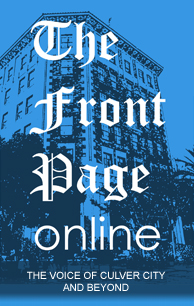Times Looks the Other Way
I was reflecting on those days on Friday morning after I was drawn to a heavily contrived piece in the Los Angeles Times. The Times ignored the original story of a radio reporter being attacked on the campus of a racist, screwball charter school in El Sereno when it broke last week. They hoped it would die. When it didn’t, they were forced to assign one of their weaker reporters to investigate. She produced a distorted, sympathetic story straight out of the public relations department of Academia Semillas del Pueblo. Just another rose garden of academic incense and unrelieved innocence, she concluded. This is not your rum-dum public school. It is a big-time stinker. As a charter school, it operates independently, and throughout its almost five-year history, it has focused on recruiting separatist-minded families. Separatists, by definition, are riven with hate. They aren’t separating out of love, pal. By many accounts, including the school’s own website, the campus is a cauldron of fury, fear and cleverly calculated dreariness. The school is supported by the radical Hispanic groups La Raza and MeCHA. Ninety percent of its students are Hispanic, the rest “native/Alaskan native.” No whites, blacks or Asians. The coded language is thicker than the belly Principal Marcos Aguilar, who is, not surprisingly, a coarse-speaking veteran of the hate movement. The school describes its mission as being “dedicated to providing urban children of immigrant native families an excellent education founded upon their own language, cultural values and global realities.” What the heck is an “immigrant native”? The State Academic Performance Index Scores give the Pasadena-adjacent school its lowest rating.
The Victim’s Version
Here is what the radio station said happened last week: Sandy Wells, a reporter for KABC (790), had just finished audio taping an interview with Principal Aguilar. As Mr. Wells was walking down a sidewalk toward his car, another car jumped the sidewalk, a thug menacingly leaped out, grabbed his tape recorder and fled. Across the street, three school security guards stood, mesmerized. The school said that it must have been a case of random thuggery. It certainly didn’t know anything about dispatching any of its bouncers to assault and rob Mr. Wells.
Guess Who Guessed Wrong Again?
As surely as a ball that you throw in the air is going to return to earth, the boys and girls at the Times are going to come down on the wrong side of a hometown issue. Especially when they are running to catch up belatedly. On June 1, the Times was confronted with an old bugaboo of a dilemma, electronic media vs. print media. A radio station had just broken a sexy story. Reporter attacked at school. That makes every journalist’s blood flow faster, except, apparently, at the Times. Interest in the story quickly shot across the country. With its editorial staff having largely been winnowed to affirmative action-type hires and marginal white-bread talent, this headless Times crew did not know how to react. It did what all confused people do. It dithered. For newspapers, there is an unresolved historic debate over how to react when a rival, print or electronic, makes news. Do you join in the coverage, thereby boosting a perceived rival? Or do you ignore the story at your peril? Are you depriving your readers? Will your readers notice?
Is It Time to Panic Yet?
After Mr. Wells of KABC was attacked, the Times found itself in a frightful mess, especially since it has been taken over itself recently by a yahoo element of reporters. The Times is in the not-unusual business of defending reporters’ safety and rights, but what should it do in this case? Here was their conundrum: A reporter was attacked, true. On the campus of a radical school, true. But drat, he was a radio reporter. This stamps him as not quite a genuine journalist. Stinky-poo. Largely a rudderless ship these days, the Times editors were unsure whether to sit, stand or squat. They tried all three at once. It was painful. On a newspaper where its media columnist makes up definitions for journalists to facilitate a politically correct statement, the Times was trapped with its editorial pants bunched up down around its editorial ankles.
Postscript
The school and its academic shenanigans are the public’s business because the charter school is taxpayer-supported. The school is a cinch to have its charter renewed in a few months, as required every five years. The LAUSD, hardly known for its scrupulous oversight, presently has granted the cesspool a clean rating. Your academic leaders, hard at work for you and your children.
